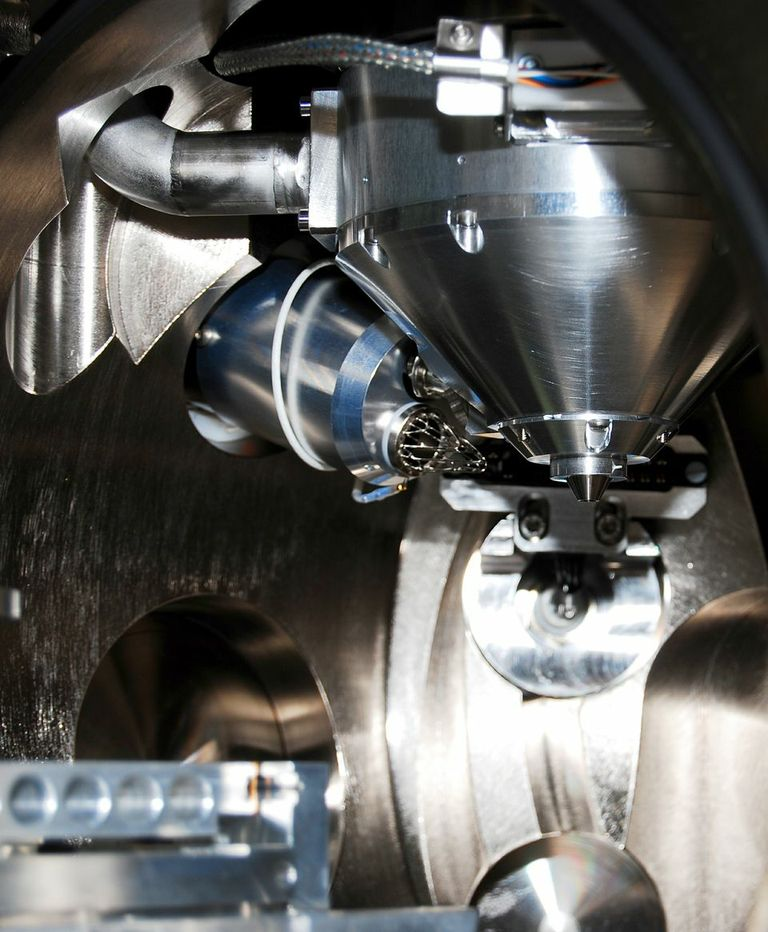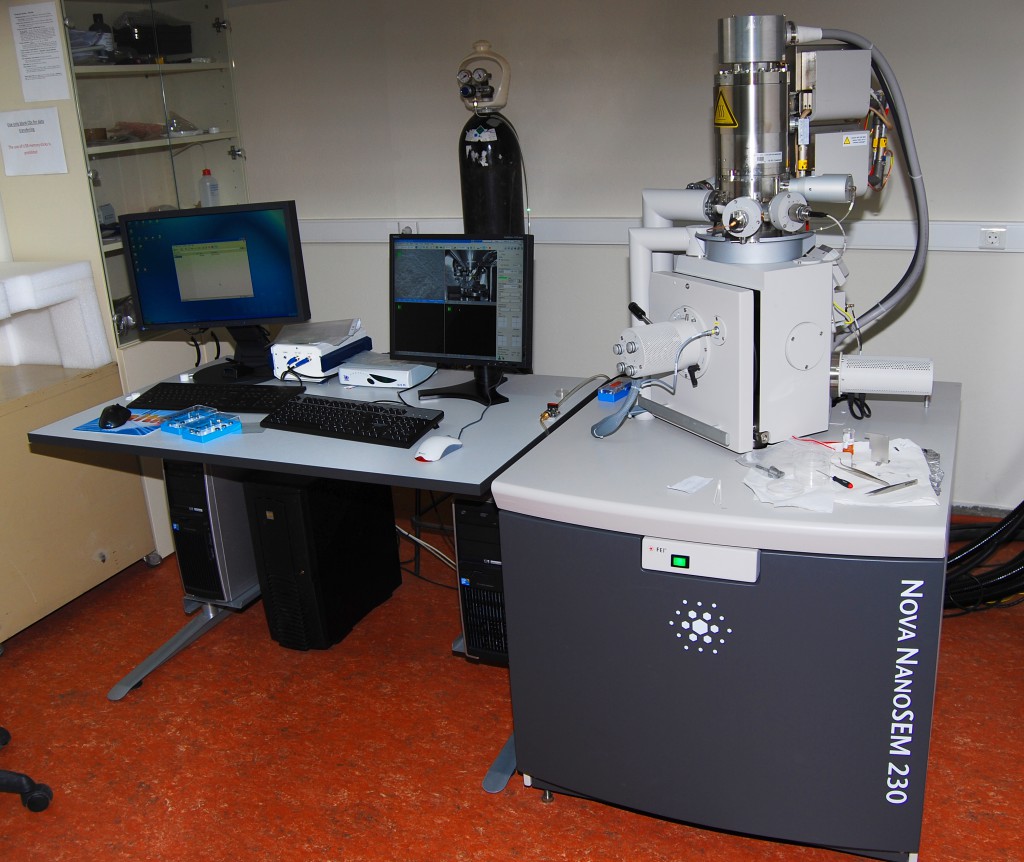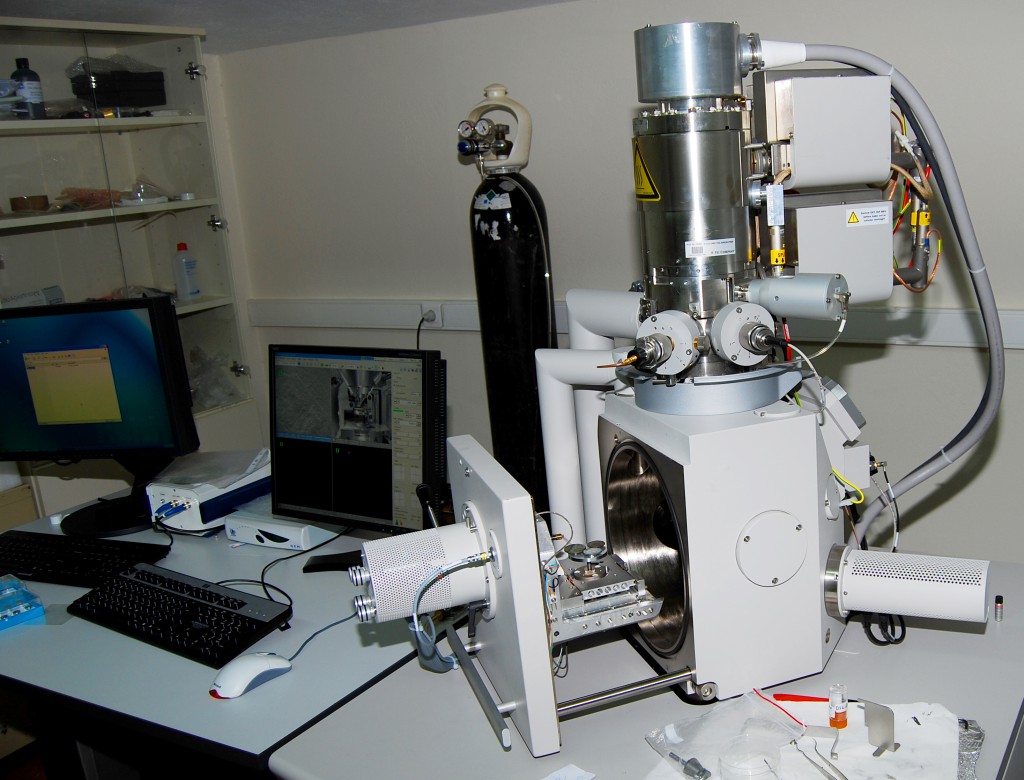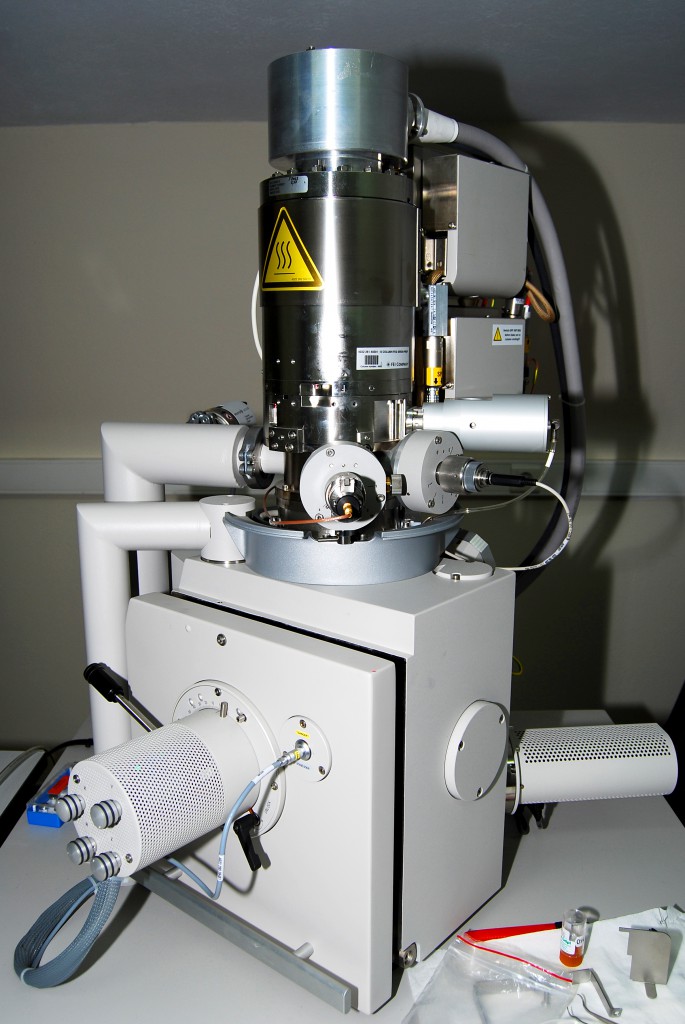Description:
The Nova NanoSEM Scanning Electron Microscope (SEM) produces enlarged images of a variety of specimens, achieving magnifications of over 500 000x providing ultra high resolution imaging in a digital format. This important and widely used analytical tool provides exceptional depth of field, minimal specimen preparation, and the ability to combine the technique with X-ray microanalysis. The Nova NanoSEM has 2 operating vacuum modes to deal with different types of sample. High Vacuum (HiVac) is the conventional operating mode associated with all scanning electron microscopes. The other application mode is Low Vacuum (LoVac). In this mode the
column is under high vacuum, and the specimen chamber is at a high pressure ranging from 0.075 to 1,5 Torr (10 to 200 Pa). This mode can use water vapour from a built-in water reservoir, or auxiliary gas which is supplied by the user, and connected to a gas inlet provided for this purpose. Using the Low Vacuum mode Observation of outgassing or highly charging materials can be made without the need to metal coat the sample, which would be necessary for conventional High Vacuum mode.
 |
 |
 |
 |
